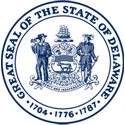DEPARTMENT OF AGRICULTURE
Delaware Nutrient Management Commission
PROPOSED
PUBLIC NOTICE
1204 Nutrient Management Turf Specific Regulations
The Delaware Nutrient Management Commission, pursuant to 3 Del.C. §§2201(5) and 2220(a), proposes the adoption of 3 DE Admin. Code 1204 Nutrient Management Turf Specific Regulations to regulate the application of nutrients to turf, including home and commercial lawns, over ¼ acre in size. The proposed regulations exclude athletic fields, golf courses, residential lots less than ¼ acre in size, and land used in the production for sale of sod or seed and only applies to commercial nutrient handlers who are paid to apply such nutrients.
Written comments should be sent to Brooke Walls, Acting-Administrator of the Delaware Nutrient Management Commission, 2320 S. DuPont Highway, Dover DE 19901. Written comments will be accepted until 5:00 p.m. on March 31, 2025 pursuant to 29 Del.C. § 10118(a).
1204 Nutrient Management Turf Specific Regulations
This regulation has been developed pursuant to 3 Del.C. Ch. 22. That statute established the Delaware Nutrient Management Commission and authorized the Commission to develop, review, approve, and enforce nutrient management regulations, including regulations governing the application of nutrients to turf. This regulation was developed by the Commission and the Delaware Department of Agriculture. It is adopted with the guidance, advice, and consent of the Commission.
This regulation is promulgated pursuant to the authority provided by 3 Del.C. §§2201(5), 2220(a), and 2250(a).
The purpose of this regulation is to establish requirements for nutrient applications, record keeping, and enforcement pertaining to turf pursuant to 3 Del.C. §2250.
For purposes of this regulation, the following words or terms shall have the following meaning:
"Applying", or any derivation of the word "apply", as it relates to the application of nutrients, means the human controlled mechanical conveyance of nutrients to land for the purpose of applying organic or inorganic nutrients.
"Certification" means the recognition by the Commission that a person has met the qualification standards established by the Commission and has been issued a written certificate authorizing such person to perform certain functions specified in this regulation.
"Commercial nutrient handler" means a person in this State who applies, uses, or supervises the application of organic or inorganic nutrients to turf or land as a component of a commercial or agricultural business in exchange for a fee or service charge.
"Commission" or "DNMC" means the Delaware Nutrient Management Commission.
"Enhanced efficiency fertilizer" means a fertilizer product that increases plant uptake and decreases the potential of nutrient loss to the environment, including gaseous loss, leaching, or runoff, when compared to an appropriate reference fertilizer product.
"Person" means any individual, partnership, association, fiduciary, or corporation or any organized group of persons, whether incorporated or not.
"State Nutrient Management Program" or "SNMP" means all the nutrient management program elements developed by the Commission, whether or not reduced to rules or regulations.
"Turf" means residential, commercial, and publicly owned lands planted in closely mowed and managed grass. Turf does not include athletic fields, golf courses, residential lots less than 1/4 acre (10,890 square feet) in size, or land used in the production for sale of sod or seed.
"Waterways" means all tidal waters (up to the mean high water line) as well as all non-tidal rivers, streams, lakes, ponds, bays, and inlets (up to the ordinary high water line).
"Wetlands" means those lands above the mean low water elevation including any bank, marsh, swamp, meadow, flat, or other low land subject to tidal action in the State of Delaware along the Delaware Bay and Delaware River, Indian River Bay, Rehoboth Bay, Little and Big Assawoman Bays, the coastal inland waterways, or along any inlet, estuary, or tributary waterway or any portion of those waterways, including those areas which are now or in this century have been connected to tidal waters, whose surface is at or below an elevation of 2 feet above local mean high water, and upon which may grow or is capable of growing any of the following plants:
Eelgrass (Zostera marina), Widgeon Grass (Ruppia maritima), Sago Pondweed (Potamogeton pectinatus), Saltmarsh Cordgrass (Spartina alterniflora), Saltmarsh Grass (Spartina cynosuroides), Saltmarsh Hay (Spartina patens), Spike Grass (Distichlis spicata), Black Grass (Juncus gerardii), Switch Grass (Panicum virgatum), Three Square Rush (Scirpus americanus), Sea Lavender (Limonium carolinianum), Seaside Goldenrod (Solidago sempervirens), Seablite (Suaeda maritima), Seablite (Suaeda lineraris), Perennial Glasswort (Salicornia virginica), Dwarf Glasswort (Salicornia Bigelovii), Samphire (Salicornia europaea), Marsh Aster (Aster Tenuifolius), Saltmarsh Fleabane (Pluchea purpurascens var. succulenta), Mock Bishop's Weed (Ptilimnium capillaceum), Seaside Plantain (Plantago oliganthus), Orach (Atriplex patula var. hastata), Marsh Elder (Iva frutescens var. oraria), Groundsel Bush (Baccharis halimifolia), Bladderwrack (Fucus vesiculosus), Swamp Rose Mallow, Seaside Hollyhock or Marsh Mallow (Hibiscus palustris), Torrey Rush (Scirpus torreyi), Narrow-leaved Cattail (Typha angustifolia), and Broad-leaved Cattail (T. latifolia) and those lands not used for agricultural purposes in 1973, containing 400 acres or more of contiguous non-tidal swamp, bog, muck, or marsh exclusive of narrow stream valleys and tax ditches where fresh water stands most, if not all of the time due to high water table, which contribute significantly to ground water recharge, and which would require intensive artificial drainage using equipment such as pumping stations, drain fields or ditches for the production of agricultural crops.
Any person who applies, uses, or supervises the application of organic or inorganic nutrients to turf or land as a component of a commercial or agricultural business in exchange for a fee or service charge on or after January 1, 2027 must first be certified by the SNMP as a commercial nutrient handler.
6.1 As required by Title 3, Chapter 22, nitrogen and phosphorus applied to turf in excess of ¼ acre (10,890 square feet) shall be applied according to the following, unless covered by a nutrient management plan as defined in 3 Del.C. §2202(15):
6.1.1 Nitrogen applications shall not exceed 3.0 pounds per 1,000 square feet per annum or 1.0 pounds per 1,000 square feet per application unless:
6.1.1.1 Enhanced efficiency fertilizers account for less than 70% of application products for a maximum of 3.5 pounds per 1,000 square feet per annum or 1.0 pounds per 1,000 square feet per application.
6.1.1.2 Enhanced efficiency fertilizers account for more than 70% of application products for a maximum of 4.0 pounds per 1,000 square feet per annum or 1.0 pounds per 1,000 square feet per application.
6.1.2 Phosphorus applications may only be applied if a soil test shows a phosphorus fertility index value under 100. The test must be taken for each new customer and annually in the 12-month period phosphorous will be applied.
6.2 Setbacks
6.2.1 No nitrogen or phosphorus should be applied to impervious surfaces. Products that land on impervious surfaces must be swept back into the lawn or otherwise removed and properly disposed.
6.2.2 No nitrogen or phosphorus may be applied within 15 feet of waterways or wetlands, unless using drop spreader, rotary spreader with deflector shield, or targeted spray, then may reduce setback to 10 feet.
7.1 Commercial Nutrient Handlers applying nitrogen or phosphorus to turf shall record and keep a contemporaneously recorded log available for inspection at all times by the Secretary of the Delaware Department of Agriculture or the Secretary's designee, or the Commission.
7.2 The log must include:
7.2.1 Name of applicator;
7.2.2 Size of area fertilized;
7.2.3 Date of application;
7.2.4 Address and location of client;
7.2.5 Rate of application;
7.2.6 Total amount of fertilizer used per application;
7.2.7 Analysis of fertilizer product used; and
7.2.8 Original or legible copy of the fertilizer label.
8.1 Non-compliance with this regulation may result in an enforcement action, including imposition of fines, as described:
8.1.1 First offense of non-compliance will result in education and opportunity to correct.
8.1.2 Second offense of non-compliance will result in a monetary penalty of $500.
8.1.3 Third offense of non-compliance will result in a monetary penalty of $1000.
8.1.4 Certification suspension to be determined through hearing by the Commission.







